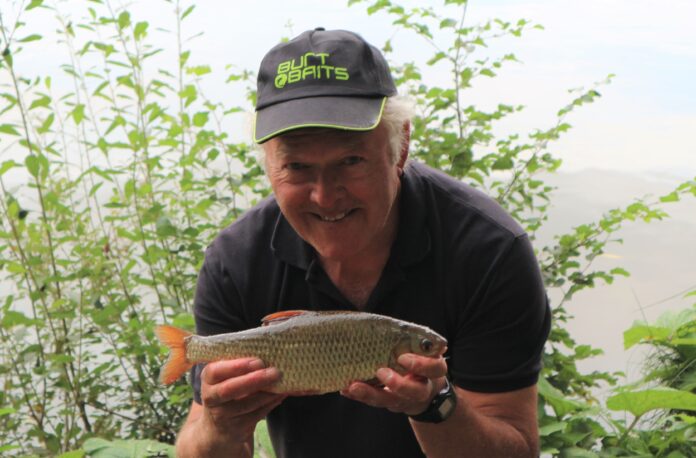WEEDY SURPRISE
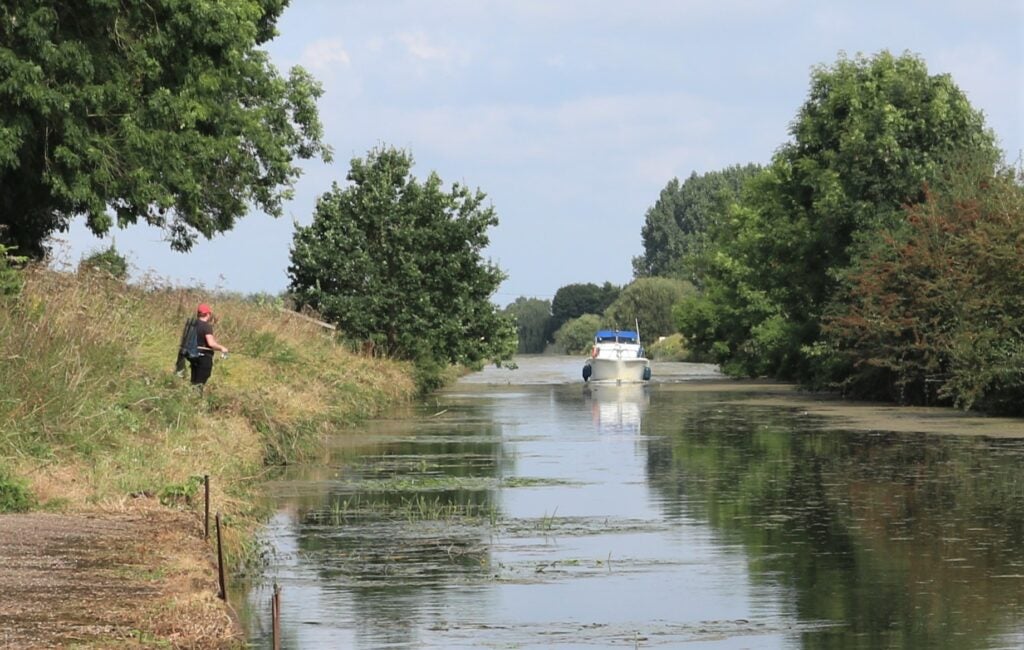

Matches were due to start next month on the Fossdyke Canal, so I took a run up there to see what the score was. I fished the canal early season, but it hadn’t woken up back then. This trip I was in for a big shock, because as I stopped to look at my favourite haunts, many miles of the waterway were choked solid with duckweed. This had probably got in from the River Witham, which is connected, and always suffers badly with the problem. The match stretches were unfishable, but a bit further along at a place weirdly named Drinsey Nook, the weed was more thinly spread. A couple of Lincoln club members were pole fishing and getting plenty of bites, so I decided to give it a go. Moving away from the road behind, there was only a roving lure angler in the distance, so I had plenty of water to choose a peg from. Although the surface weed wasn’t too bad at this stage, I noticed it was much thicker in the distance and was steadily coming my way.
WORM SLOP
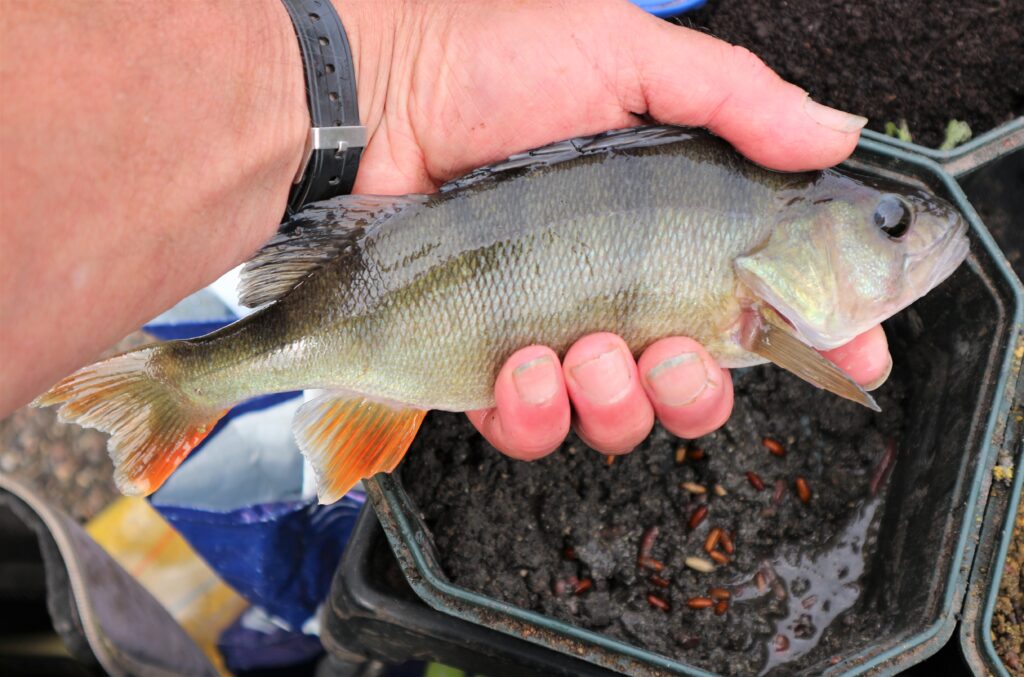

The canal was running and because the thick surface rubbish was only ten minutes drift time away, I picked a spot where the wind was tending to push the duckweed across to the far side of the canal. This would at least give me an area to fish my side of the boat channel. With wishful thinking, I cupped in two balls of groundbait on the long pole line, drip feeding a similar but softer mix by hand much closer in. I never got to fish the cupping spot because two boats came through and suddenly the whole area was choked solid. But luckily the wind picked up and quickly blew most of the horrible stuff over towards the far bank. This left me with six metres of water to play with. I was trying out some Worm Slop groundbait and it soon got things moving. I liked the way the small dollops of this dark stuff were clouding the water on the way down, which saw me catching plenty of perch, roach, hybrids, baby skimmers, bleak and silver bream.
MATCH READY
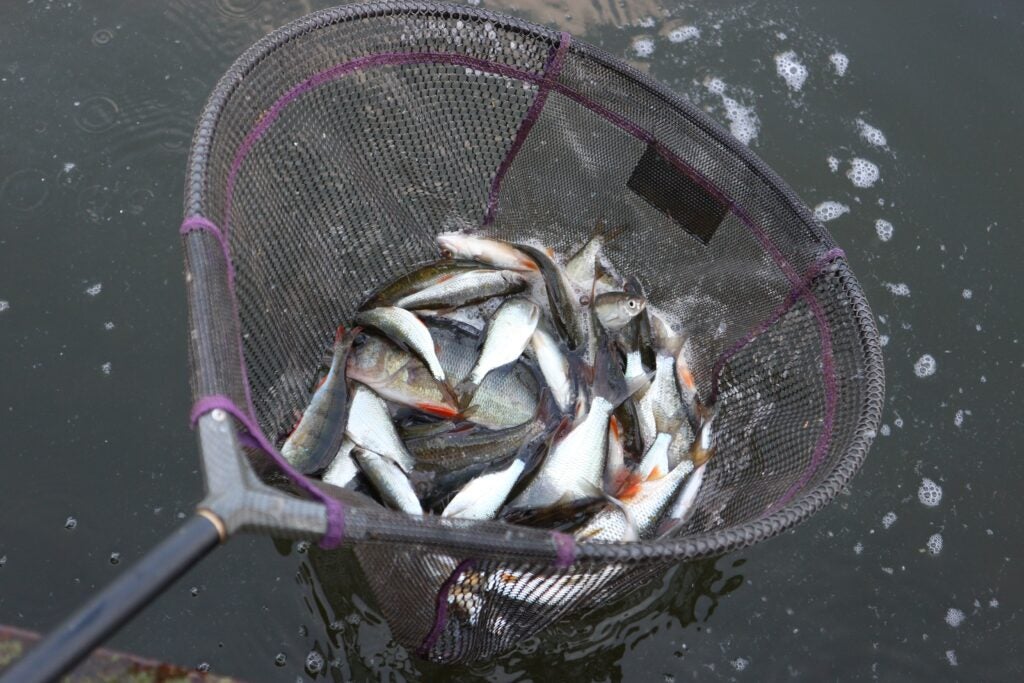

The pattern when the matches start tends to be tough on the first one, but once some bait goes in the fishing improves. I framed with just over 4lbs of small roach and perch on the first event last year and was only ounces away from winning. Towards the end of the series, double figure weights were popping up just about anywhere. It was looking like a similar pattern would be the case this year. The canal continued to flow all day. The other anglers told me that the club secretary had dropped by earlier, so I suspect he had gone down to Torksey Lock on the Trent and asked them to run some water off, to thin out the surface debris. The flow was helping towards the end of my session, but it had been a tricky day. Even when carefully lowering my rig in with the short pole, clingy weed managed to attach itself and was very time-consuming to remove. I still caught plenty. The weed problem eventually caused the matches to be postponed.
BUSY TIMES
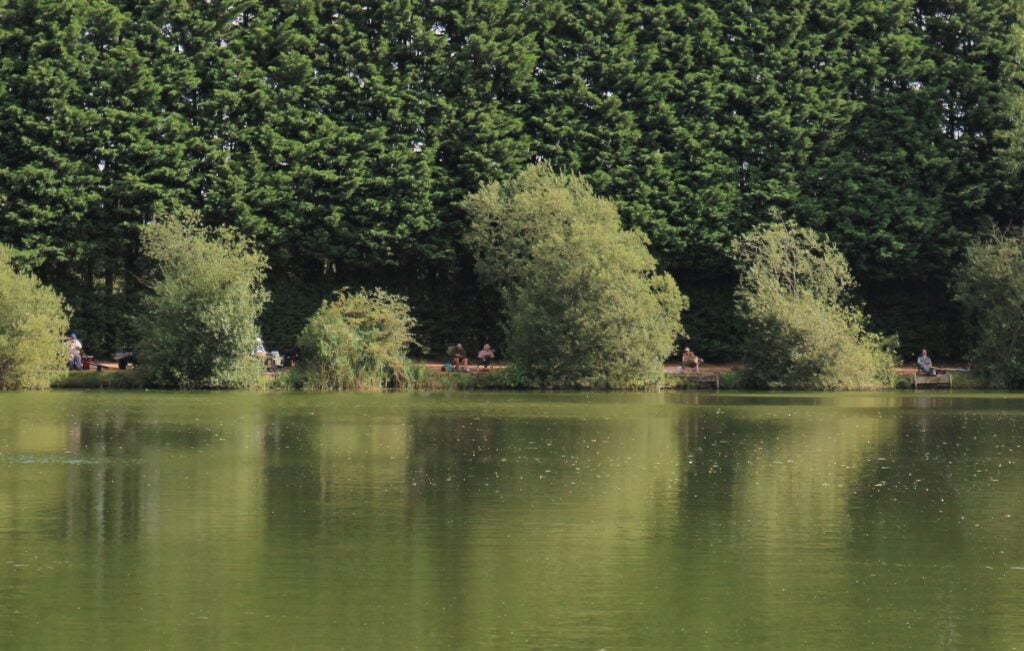

The usual roach bonanza didn’t happen earlier this year on the two main lakes at Woodland Waters, but on my last couple of visits there were signs these fish were becoming active again. You normally don’t see the big red fins when the holiday complex is busy, and boy was it packed when I arranged to meet my mate Steve there. I couldn’t see a spare peg on the far side of the lake. Feeders were raining out of the sky everywhere, so I picked a swim in a slightly quieter bay and opted for the pole. Steve was already set up and was soon catching well on a full depth pole rig. There were some Continental guys to my left and one of them stood out from the crowd. He was using two feeder rods, mind you, but cranking in a string of skimmers, bigger bream and odd carp. I could also see one of the regulars bagging up on skimmers with a long float rod and fixed waggler. I decided on just two pole rigs: one shallow at 3ft and one at the full 14ft depth.
FISH RACE
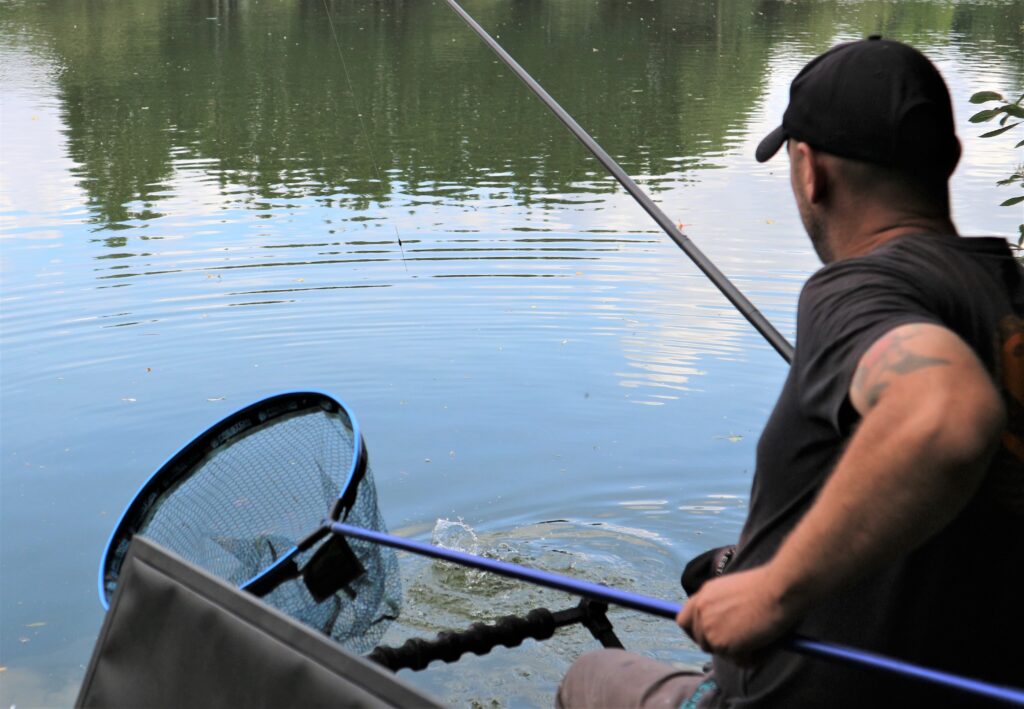

Normally when the Match Lake is packed with anglers all the disturbance puts a damper on sport, especially when it’s warm and sunny. But this was one of those strange days when the fish had decided to feed no matter what. Steve next door quickly discovered there were too many hungry mouths competing on the way down to make his full depth long pole rig work properly. He tried coming closer in, much shallower, well up the inside ledge. There was plenty of overhanging cover to his right and he was soon enjoying lots of hectic action from roach, skimmers and perch. I also started at full depth and enjoyed a good start with some skimmers, but that part of my swim faded after 30 minutes. I didn’t need any prompting to switch to my shallow rig. Happy I had cupped enough holding grub in, I began loose feeding casters over the top. It didn’t take long before my slow-sinking shallow rig was pulling a bite every time it went in.
WELCOME RETURN
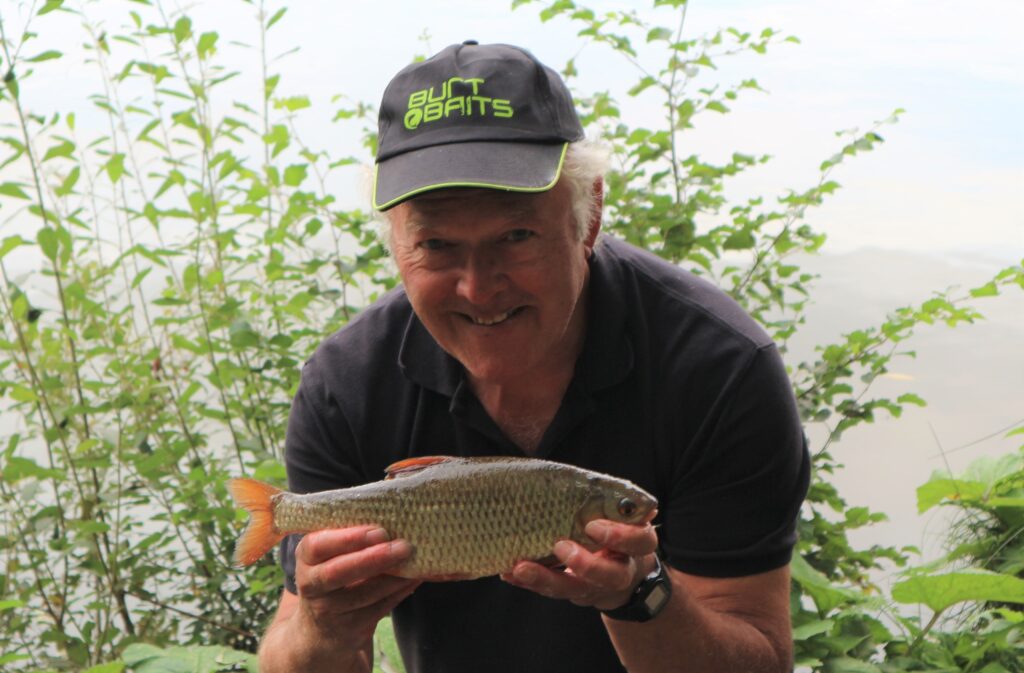

I caught lots of small roach, perch, rudd and hybrids to begin with on my shallow rig, but gradually odd skimmers and hybrids required a landing net. There were some quiet periods, but that was only to be expected with all the people about. It was a weekend and there were still lots of holiday-makers staying at the popular complex. There are several nice chalets on the southern bank of the Match Lake and I could see most of them were occupied by anglers and their families. It made me smile when I saw how many of the dads had it well sussed, happily fishing away while the kids were playing on the grass a good distance behind, mum indoors preparing Sunday lunch. But I was too busy to think about food. A steady stream of loose-fed casters were beginning to speed things up, with odd fish swirling for the shells as they hit the surface. Just as my mate Pete the bailiff arrived, so did this fabulous roach. Nice to see these on the way back.
FEEDER QUESTIONS
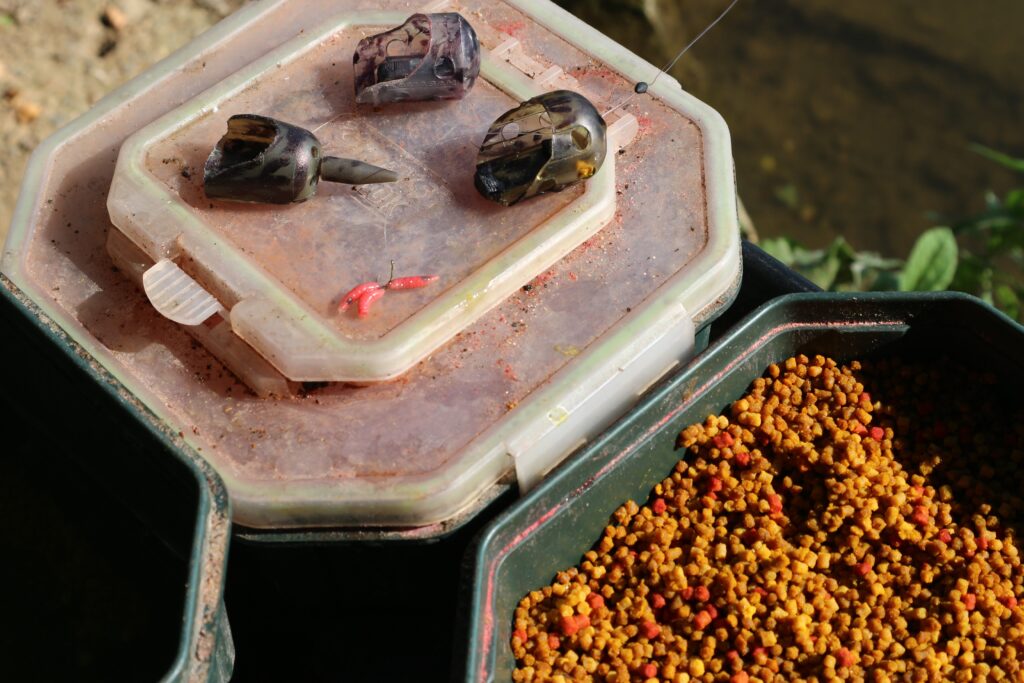

I’ve been continuing to experiment with the modified pellet feeders I mentioned in a recent Fishing Magic feature. One big problem with these in-liners is the length of hook lengths that are used with them. Standard four inch ones are most popular on the commercials for carp and other big fish, but a major fault when targeting skimmers is the lack of give in rigs. Even if you use mono reel line instead of braid, it’s easy to bump lots of these soft-mouthed fish off as you play them in. A mate uses a slightly extended hook length, which he says helps. Having tried this, it becomes awkward to bury hook baits inside the feeder, because too much line ends up coiling back on itself. I’ve tried another way with longer hook lengths, threading them through the feeder on a pulley system, anchored with soft line stops. This aimed to provide enough resistance for a bolt effect, while the extra weight of hooked fish was meant to pull more trace line into play…
PROBLEM SOLVING
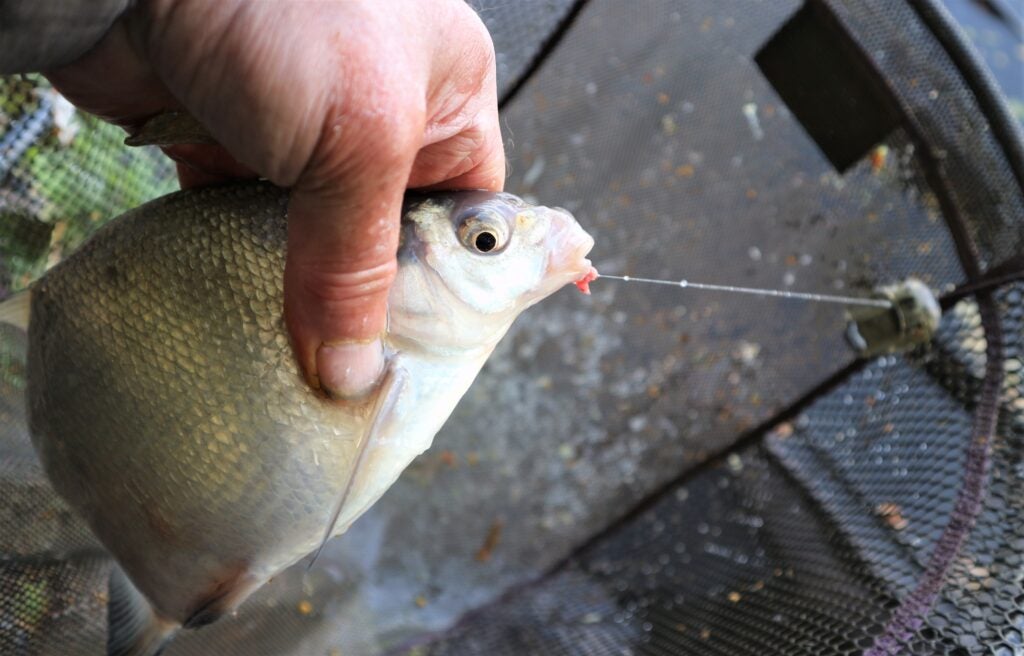

…That was the theory, but the idea faltered and I continued to bump the hook out of fish, even with a soft action quivertip rod. My next move was to try using six inch fluorocarbon hook lengths, and this is where something interesting happened. The same problem was there when trying to bury hook baits inside the feeder, to avoid tangles on the cast, having to carefully manipulate excess trace line out of the way with my fingers. I found this tricky and time consuming, deciding to try a few casts with the bait left dangling free outside. To my amazement it didn’t come back tangled around the back of the feeder, which is what usually happens. Fluorocarbon is thicker and much stiffer than the rig line I normally use for hook lengths, so it pushes the hook away. Not burying baits sped everything up and I started catching some nice-sized skimmers. I got a couple of tangles, but nowhere near as many as I experienced with low diameter mono.
STRETCHING OUT
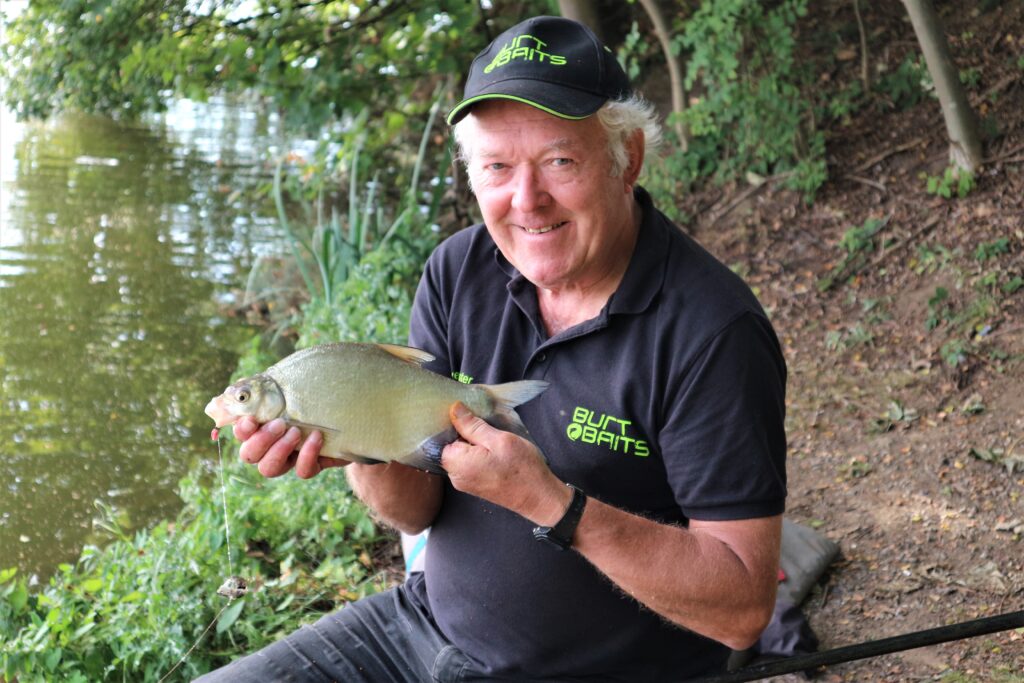

I suspected it was the lack of stretch in ultra-short hook lengths that was the main reason for bumping the hook out of skimmers. But by switching to longer lengths of fluorocarbon, suddenly less fish were being lost. Fluorocarbon has even less stretch, so maybe it wasn’t the elasticity factor that was the problem. It dawned on me that the point where most fish came adrift was just before they reached the landing net, when skimmers in particular tend to nod about and thump hard against the rod tip. In that case is must be the weight of the feeder being so close that causes the hook to lose its hold. Suddenly, by increasing the distance of the hook from the feeder from four inches to six inches, I stopped losing fish altogether for the rest of the session. I also reckon it helped that I was using my modified pellet designs, which have much lighter loadings than most off-the-shelf models. When fish pull back it’s not like they are hitting against a brick wall.
CATCHING PLENTY
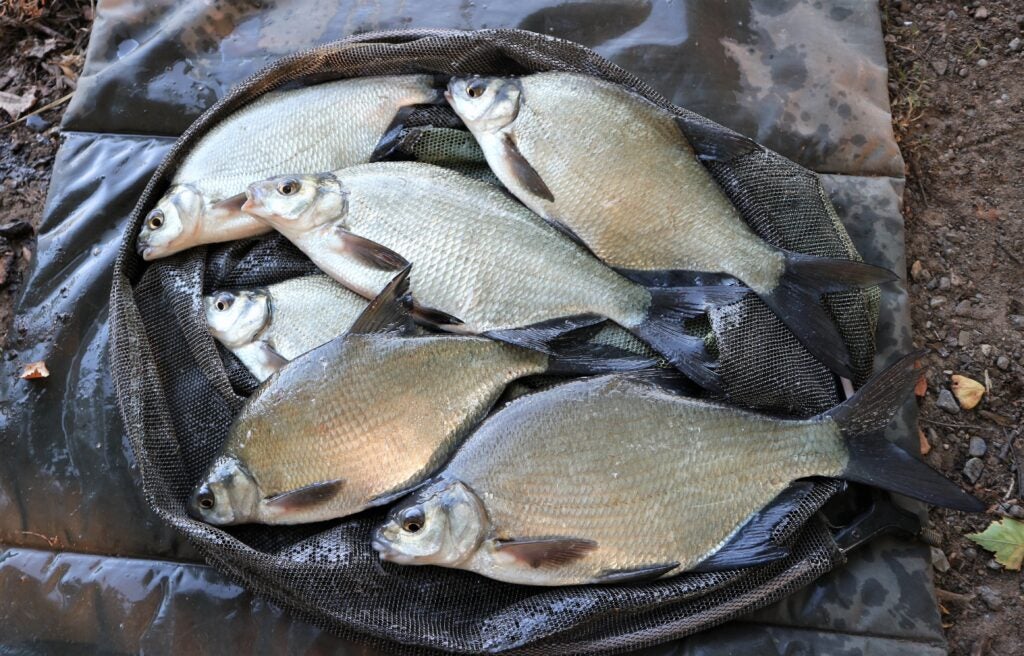

Something else I discovered about using fluorocarbon traces concerns hook patterns. With normal rig mono, I find eyed hook patterns perform best otherwise, with really short lengths of line, spade-end models cut through it when under pressure. The problem with eyed hooks, however, is they tend to be on the heavy side and more geared up for big fish like carp. This can cause missed takes with fickle feeders like skimmers and bream. Apart from fluorocarbon being virtually invisible in water, I’ve found it to be a lot more robust and tougher than low diameter rig line. It doesn’t show signs of stressing and coiling so easily, which in turn means it performs better with spade-end hooks, which don’t readily slice through it. My new combination of different line and lighter hook patterns made a huge difference to this session, with the skimmers responding much faster. This is just part of my catch, pristine shoal fish, all around the same stamp.
NEW VENUE
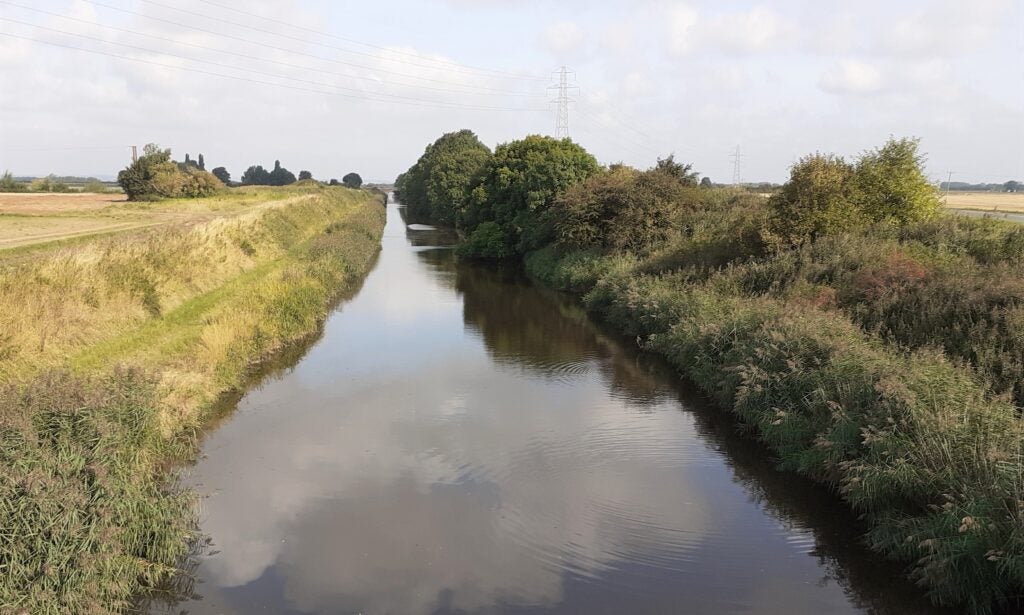

Having fished the Bargate and Sibsey Trader drains for the first time this summer, there was yet another connecting waterway I wanted to try called the Hobhole. I had driven along several miles of this drain earlier in the month, but on that occasion it was being run off like a tidal river, thanks to heavy rain the day before. Not having any stick floats or heavy feeders with me, I decided to give it a miss. When I went back the water was virtually standing still. I picked a nice-looking swim just below a road bridge, which somebody must have fished recently because this spot had been neatly cut out, while most of the banks were heavily overgrown. I don’t think this venue is fished very much these days because many miles are thick with head-high brambles and nettles. The water was coloured, so I fancied my chances of catching. I set up just two pole rigs, one long and one short. Two hours fishing the long pole didn’t produce so much as a bite.
CLOSE ENCOUNTERS
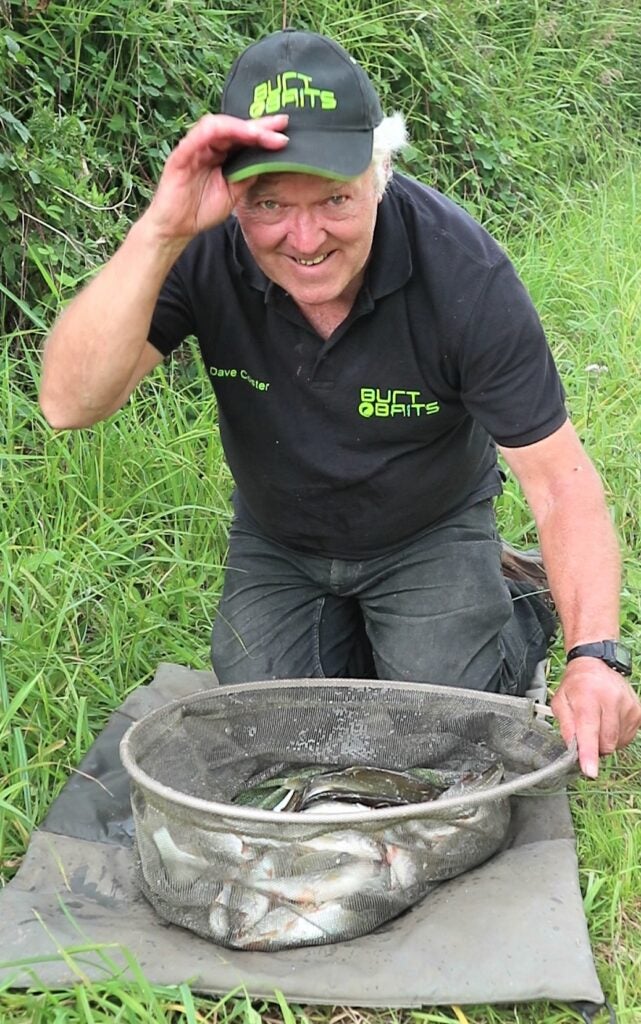

When I dropped my reserve rig in much closer the float went under straight away. For some reason the fish were hugging my bank, even though there was nice overhanging cover across and nearly 6ft of weed-free water down the middle. I caught roach, perch and pale looking hybrids steadily, switching between red maggots, casters and segments of worm. Soft groundbait helped to keep things moving, while loose-fed casters at one stage saw some better roach taking single shells on-the-drop. It would have been a pleasant spot to spend the day, if it hadn’t been for heavy lorries and huge tractors constantly rumbling over the nearby bridge. It was harvest time in the surrounding fields and there was the drone of machinery everywhere. I kept having a quick look on my long pole line, but still couldn’t buy any interest over there. Strange that. I still managed a nice net of silvers and aim to go back soon when things quieten down.










